

This site uses non-intrusive cookies to enable us to provide a better user experience for our visitors. No personal information is collected or stored from these cookies. The Society's policy is fully explained here. By continuing to use this site you are agreeing to the use of cookies.
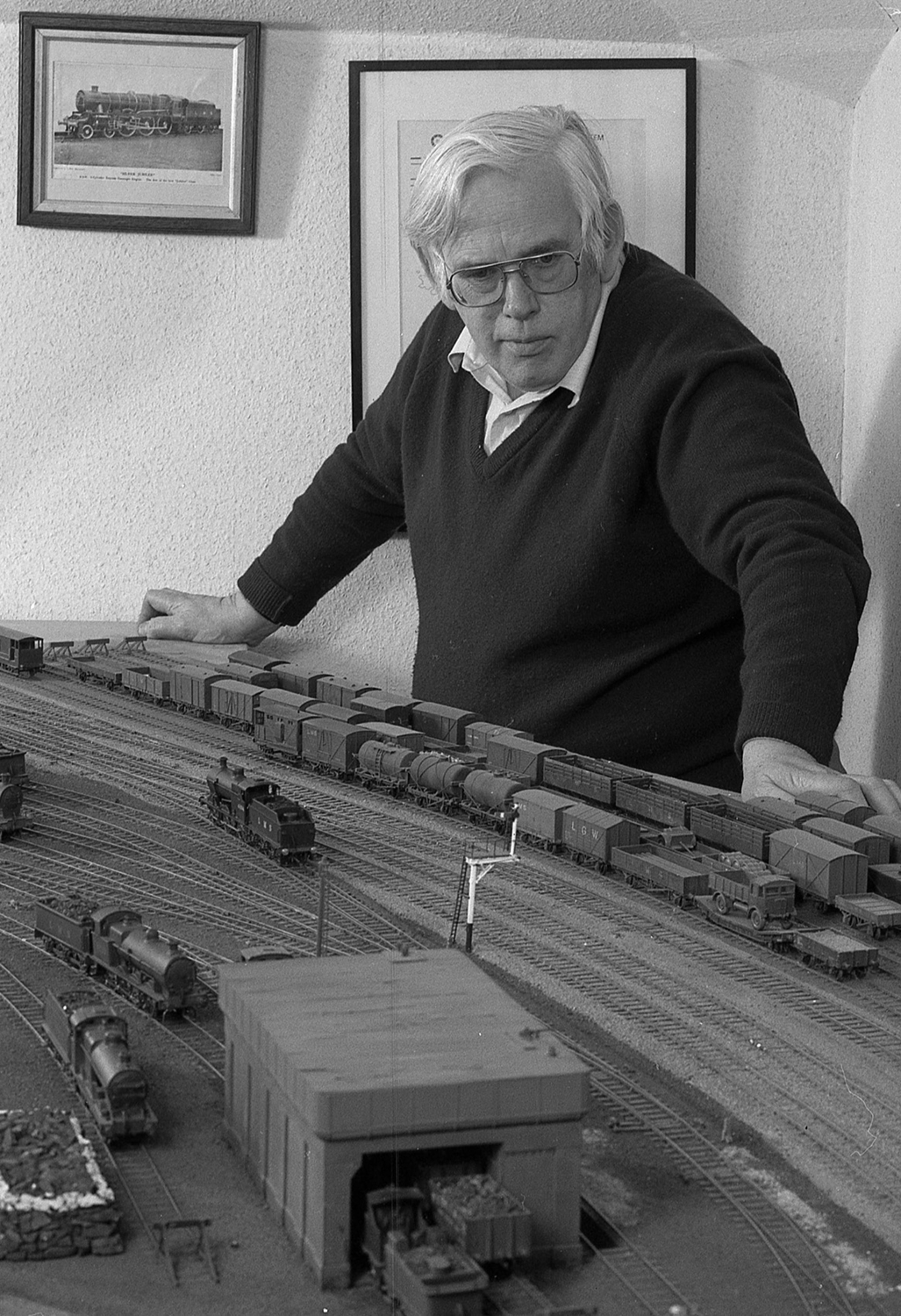
Don Rowland with Rhuddall Heath 1987 - photo by Bill Roberton
That Don Rowland was a dyed-in-the-wool LMS man was not something of which I was aware when I first met him. In fact, you could be in his company for a long time before you began to suspect where his deepest company loyalties lay. That was typical of Don in so many ways. He was not a man to hold narrow views or prejudices, and even less to force any opinions on to other folk. What he did pass on, though, was railway knowledge and modelling expertise. Yesterday evening I looked at a North Staffs. van and a Scottish trader's wagon for Balgonie, which he gave me a long time ago. Then I looked as some complicated pointwork on a curve which he had built for me. Surely these show a man not only of wide interests but with a generosity of spirit. (He had incidentally built about 350 wagons in his time).
Don's name was first known to me through his pathfinding writings, such as Keeping the Balance, in which the dispensed knowledge was shot through with a rich vein of wry humour. How fitting that his last publication was entitled Twilight of the Goods, for it embodies the Don we knew. British Goods Wagons had been published in 1970, with its dedication "To all kindred spirits for whom the crash of buffers and the snatch of thee-link couplings is music to the ears". That book was the work of a notable pioneering trio, but the poetry of that dedication again seems to me to be pure Don. Like his British Railways Wagons - The First Half-million, these writings show a man who loved - and understood - all railways, of which the LMS happened to be a particular interest. Derek Jenkinson is quoted as saying no one knew more about the LMS than Don. That would have embarrassed Don, but was probably true, as Don really did understand what made a railway tick.
The LMS was perhaps inevitable, for his father was an LMS man and the family lived in Crewe, which had a notable station to entertain a growing lad. As his father was at that time a senior man in the investigation of accidents, Don was in a position to learn just how the railway really worked, and he could be taken for a professional in any discussion of the operation of railways. In fact he was a professional for a year before university, for he was booking clerk and shunter at Gordon Hill - that was ex-LNER accountancy methods and ex-LNER Quint-art carriages, but Don was happy on any railway. His writings on booking office processes are a valuable record, and emphasise how he saw the whole system as fascinating, even if the clash of buffers and clang of couplings on wagons sounded and looked more dramatic. And it was all worth recording by word and model.
Many of the illustrations of wagons for the aforementioned books had been taken by Don on his wanderings with a camera around Scottish locations, for he lived nigh on 50 years in Scotland, and became weel-kent in the modelling world (he was Chairman of the Edinburgh & Lothians Club in the famously historic Advocates Close in the Old Town of Edinburgh) and in the preservation world (he was Chairman of the Strathspey Railway Association). One of my colleagues remembers Don and Ken Northwood visiting Edinburgh Academy in the 1960s to talk about railways. It was a good time to be in Edinburgh, for he consorted with people such as Ken, W. Loch Kidston, and Sir Eric Hutchison. Don was in Edinburgh to study geography, but went on to work - still in Edinburgh - for Ferranti, the electronics firm. Some of our model layouts still run on wires which were legally superfluous to the firm's requirements: well, if it was good enough for military work . . .
Don had work study training with Ferranti and became a computer analyst when the firm set itself up
seriously in that area. I have been pointing out that Don was never insular. As an example, he determined in
1971/2 that a 4mm NBR J37 was needed for the local model railway world - and he would do it in styrene. The
problem was the curve of the tender raves, and his solution is worth recalling:
"I called on the resources of some tame mathematicians at work. Suggesting they might like to calculate
something really worthwhile for a change, and the problem was explained. After a short deliberative period,
dimensions were requested, which, by coincidence, I happened to have on hand, and I was soon in possession
of the answer required. That evening a piece of styrene sheet was worked out as per instructions, cut to
shape and tried. Lo and behold, it worked first time - great stuff, this maths". That last bit is so Don.
Mind you, he once told me that the mathematician concerned had been looking for an afternoon off, which was
duly granted.
My own good fortune in getting to know Don more closely began at the inauguration in 1985 of the East of Scotland 4mm Group of modellers, when he was already a well-established figure in Scotland. Don had the knack of making life a bit better, whatever the topic. Maybe it was that beaming smile. It will forever be associated in my mind with Don proclaiming "Greetings!" as he invariably did when he made his entrance to our meeting room. It was genuinely meant, and it lifted the spirit, especially if one happened to hear it when under the layout in a meaningless tangle of wires.
As with meetings of the HMRS, of which he was a President, and gatherings of the Scalefour Society, of which he was also a President, in our modelling group he gently imparted knowledge and experience. The two layouts with which he was involved were not in the LMS period, one was joint Cal./NBR (Bonnybridge Central) and one North British (Burntisland 1883), but that showed his lack of prejudice or obsession. While he could turn his hand to anything, his contributions to these were primarily in buildings. Outstanding on Burntisland 1883 is his group representing Forth Place, which features the Forth Hotel which housed the District Control Office (with adjacent Pool Room!) in LNER days.
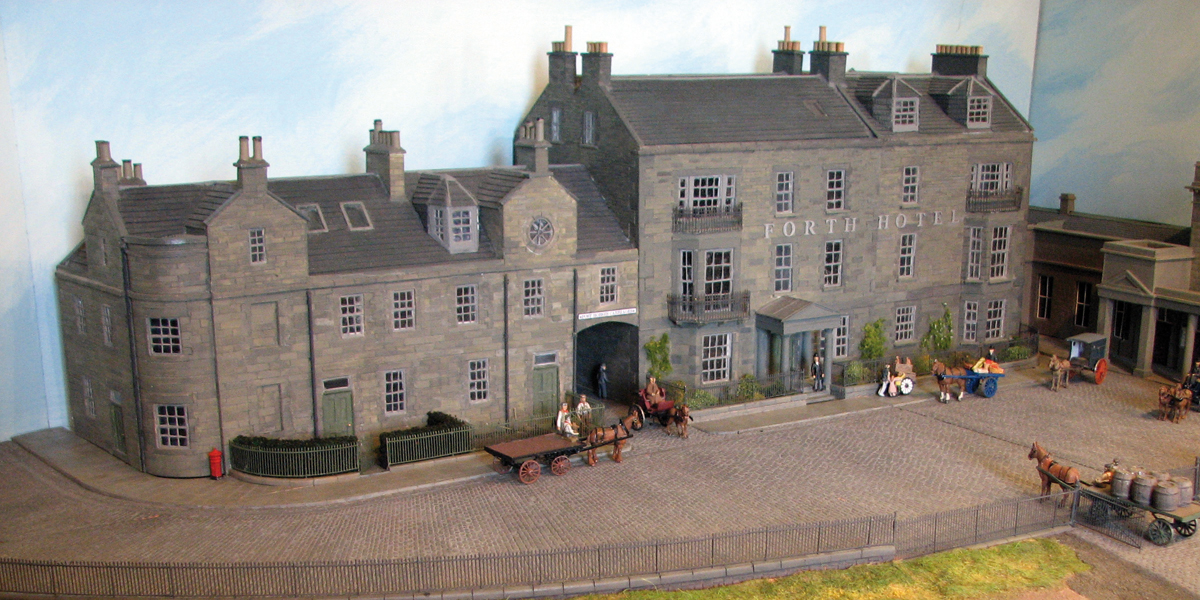
Forth Hotel by Don Rowland
My part in that model was to participate in a surreptitious exchange on Warrington Bank Quay platform of mysterious large box with snap-over catches and a large leather strap: on the CCTV it must have looked more than a little suspicious, but I got it over the border to Scotland safely. This was all necessary because that Forth Place group was built away from Scotland. In 1999, after 44 years of married life in Edinburgh, Don and Olive had moved south to Whitchurch (LNW) to be closer to their daughter, Elaine. There Don occupied one bedroom as his workshop and across the landing Olive occupied another, working skilfully on her delightful dolls houses. Olive and Elaine were a great support to Don in his hobbies, and he was always mindful of them and their interests. Indeed, as he grew more infirm, he would book himself into a care home, so that the ladies could go off on holiday together and not need to worry about him. .
That thoughtful helpfulness was ever a characteristic of Don. All his friends north, south and throughout the railway/model railway world speak of it. His knowledge and experience were never flaunted, but were there if sought. You could see them in the Christmas puzzles which he set for the Model Railway Journal. In Whitchurch Don participated fully in the Crewe area modelling group, and to the end was working on the radio control of model railways - he saw DCC as a fad - whereas the regular need for fuel and water (i.e. recharging a battery) was much more like the real thing.
In his final years Don found getting around ever more tricky, and he acquired a pony truck to assist him. A visit and conversation with him was still a delight, for he remained interested in railways old and new. After some spells in hospital earlier this year, he returned home, where he wanted to be, and died peacefully in his sleep on 9th August, his 91st year.
We have lost a great man, whose influence will long remain with us. We all offer our deep condolences to Olive and Elaine, craftswomen in their own right, who so nobly encouraged Don in his enterprises and shared him with us.
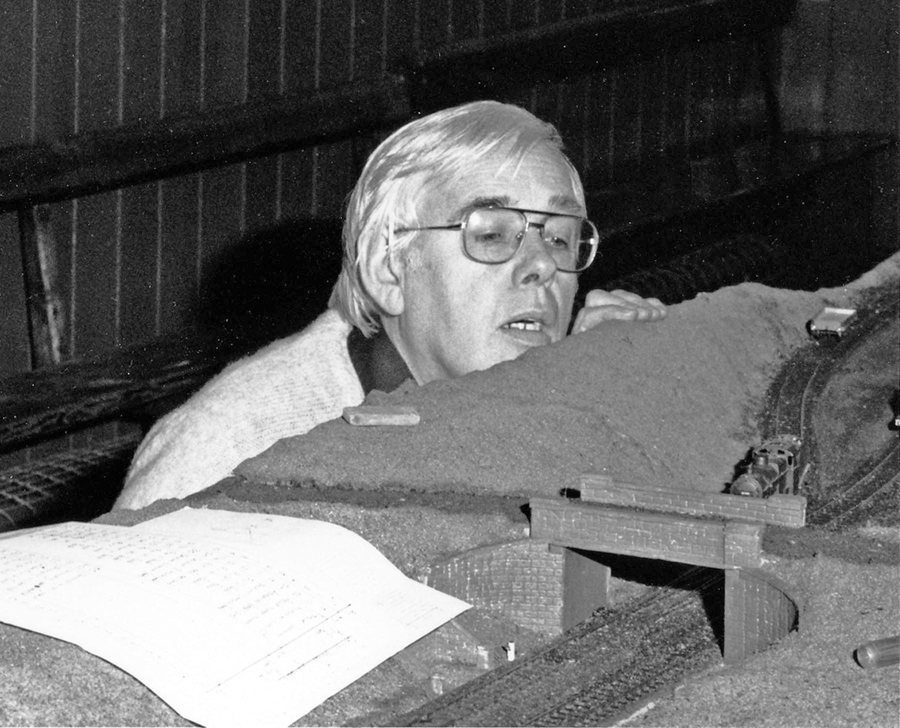
Don at Ladybank Hall . . . . with Bonnybridge Central - photo by Bill Roberton
I am sure there will be many appreciations of Don Rowland recalling all he did for our hobby in both the prototype and model fields, but a less usual aspect comes to mind which I should like to share.
As well as a deep interest in wagons, one of the activities we shared was volunteering on the Strathspey Railway and during a stopover one weekend in September 1986, he persuaded me, much against my inclination, to act as booking clerk at Boat of Garten station. Sometime on the Saturday before the first train was due to depart, he carefully explained to me the mysteries and intricacies of issuing tickets to the intending passengers. It was just as well that there are only a limited number of fares on a short heritage line. In due course, he left me to my own devices, although I seem to recall he was about elsewhere on the station if help was needed. Then towards the end of the day he returned to take me through the closing procedures, cash up and achieve a balance, adding what one might do if there happened to be a small surplus! On the Sunday, however, once opened up, he had business elsewhere on the railway and I was left on my own to sink or swim until he returned on the last train to help close up.
I have never again been called upon to act as booking clerk, so the complicated procedures adopted by the railway management to ensure that it received the revenue it had earnt I have long since forgotten. Fortunately, Don took the trouble to write at length about the work of booking clerks on the LMS and this may be found in LMS Journal No. 32, pages 41 to 47. Just one example of the breadth of his knowledge of the railways.
PS If, on rereading the above-mentioned article, you are left feeling bewildered, this was nothing compared with the challenge facing the goods clerk with thousands of classifications, dozens of standard and exceptional rates, rebates, wagon returns, consignment notes, invoices, claim forms, etc. to be dealt with. I doubt there are many left now who can set down those procedures as a matter of history. PT
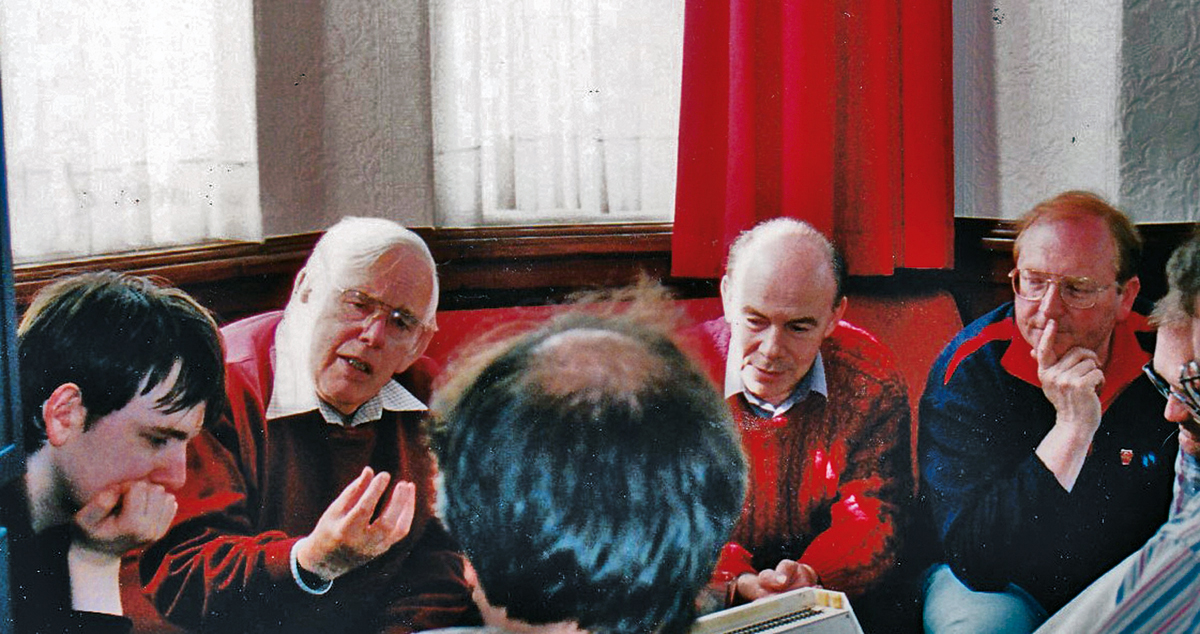
Don with NEFG Berwick 06/06/1999
I first became aware of Don Rowland from Model Railway News for August 1966 when his thinking and initial work on what became his iconic layout Central Cheshire, the first phase being called Wistaston Sidings, was explained. For some years previously, the huge variety of wagons, old and new to be seen on our railways, had fascinated me without really knowing much about them but Don's approach to properly constituted goods trains operated and shunted in a prototypical manner awakened my interest and from then on I was an avid reader of anything that I found written by him. This was followed by The World of Wagons as a series which commenced in Model Railway News in January 1967 to which I still frequently refer.
In conjunction with Bob Essery and Bill Steel, he co-authored The British Goods Wagon in 1970.
After MRN metamorphosed into Model Railways he continued to submit articles and into Model Railway Journal on its foundation, one of its highlights being his regular Christmas puzzle which tested any entrant's knowledge of how the big railway worked albeit often using an example based on Central Cheshire. All the place names used on that layout existed in the real Cheshire though apart from Tarporley, none had a railway and even that one was nearer to Beeston Castle.
As far as I am aware, his final work was Twilight of the Goods by Wild Swan Books in 2019.
While many books and articles have been written since, surely it was Don's work that led the way in raising interest in the humble goods wagon and train, certainly with his ability to relate the working of wagons on the big railway to the model situation.
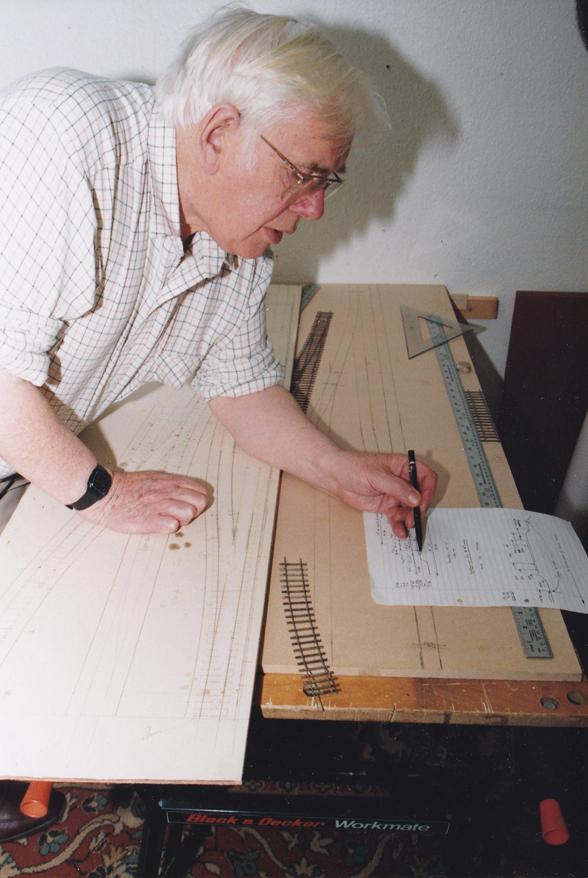
Don Rowland 01/05/1999
Site contents Copyright © LMS Society, 2024
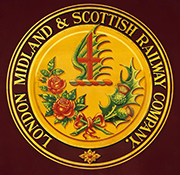
April 19th, 2024
Site contents Copyright © LMS Society, 2024